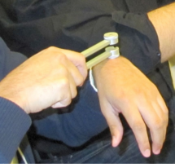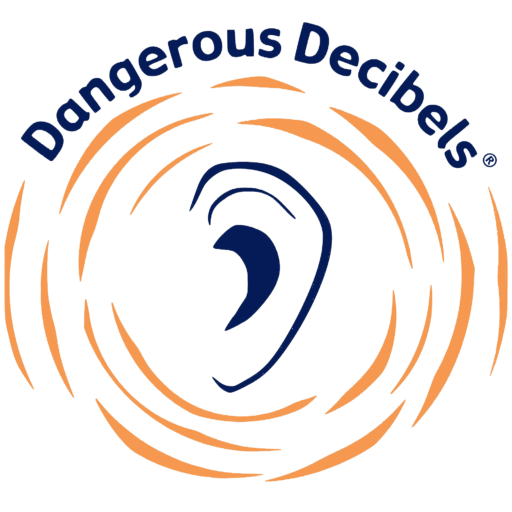Tuning Fork: Listening and Touching

This activity is designed to reinforce the concept that sound is made when objects vibrate. You, the educator starts off by explaining what a tuning fork is and providing some information about how to use a tuning fork safely.
While there has never been an occurrence of a student breaking their glasses or teeth by placing a vibrating tuning fork against them, there is a risk that this could occur, so it is good practice to eliminate the potential for this to happen at the outset.
Next demonstrate the use of the tuning fork properly. Remind the students to grip the tuning fork by the handle. Frequently, students will place their fingers or thumb on the tines of the tuning fork and then it won’t vibrate and make a sound. Remember back to the Science of Sound module earlier in this online training for a refresher on how to use a tuning fork. This is a good point in the Dangerous Decibels program to remind the students to respect each other and that it is not okay to strike their classmates with a tuning fork.
Advanced Techniques:
If the students are seated in a “U” pattern, you can easily move around between students. It is then fun to engage more students by walking up to individual students and letting them SEE, HEAR or FEEL the tuning fork, rather than limiting it to just a few students up at the front of the classroom. The key part of this technique is the seating arrangement, in order to make sure everyone in the classroom can still see and follow what is being demonstrated.
Another option is available if you purchase additional tuning forks (226 Hz). Then you would be able to pass out a tuning fork to each student while they are seated at their desks. Next you would guide the entire class through the exploration of what they SEE, HEAR and FEEL.
Some educators also pair students up with one tuning fork to share.
Regardless of which advanced technique you might use in the future, it is important to watch your clock and make sure not to exceed the allotted time for both tuning fork activities in this module (5 minutes). Be sure and gather the tuning forks up at the end of these activities.
